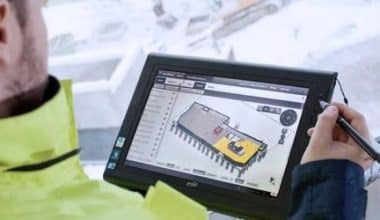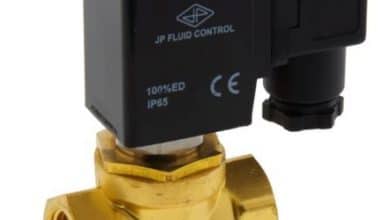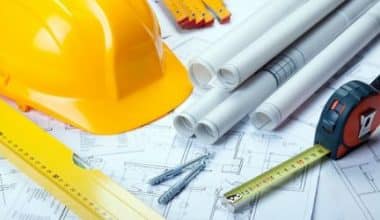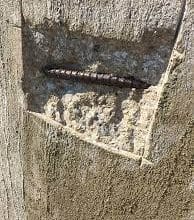Hey there! Have you been thinking about installing a pool or spa in your backyard but don’t want to break the bank paying a pool company’s high markup? You’re not alone. Many homeowners are turning to do-it-yourself pool installations to save big time and still end up with their dream oasis.
In this guide, we’ll walk through how you can profit from handling your own pool or spa installation and avoid the inflated costs that come from using a traditional pool builder. There are definitely some challenges and risks with taking the DIY route, but when done right, you can save upwards of $20,000 and get total creative freedom with the end result. Sounds intriguing? Read on to learn more!
Cost Savings of DIY Pool Construction
The #1 incentive for people building pools in their backyards is being able to avoid the hefty price tag that comes with using a pool company. Professional pool builders have to cover their overhead, pay their staff, and make a profit. This leads to them marking up the cost of materials, equipment, and labor significantly compared to what you would pay if you sourced them yourself. Here are some of the ways you can slash costs by doing it yourself:
Avoiding pool company markups
Pool builders will often double or even triple the wholesale prices they pay for concrete, tile, plumbing supplies and other materials. By purchasing these items yourself at contractor rates, you can easily shave 40-60% off retail costs.
Wholesale pricing on equipment and materials
Not only can you get better prices on structural materials, you can also buy big ticket items like pumps, filters and heaters directly from equipment suppliers instead of paying inflated retail costs.
Hiring contractors/subcontractors directly
Instead of paying the pool company’s marked up labor rates, you can hire specialty trades like electricians, plumbers and deck builders yourself and only pay their regular hourly fees.
Doing own excavation and prep work
With the right equipment rented, you can handle much of the dirt work like digging the hole, moving soil and basic grading to get the site prepped for a huge cost savings.
As you can see, taking on some of the tasks that pool builders traditionally handle opens up massive opportunities for cutting costs and increasing your profit margin on the installation. But keep in mind you do need the time, energy and patience for the DIY route.
The DIY Pool Installation Process
Installing a pool or spa yourself is definitely more complicated than just digging a hole and filling it with water (we wish it was that easy!). There are a number of steps involved to make sure your DIY pool is constructed safely and built to last. Here’s an overview of what’s involved:
Planning and Design
The first phase is all about nailing down the specifics – what kind of pool or spa you want, where it will be located, how it will be configured. Some key aspects of planning include:
- Developing a pool design and layout customized to your yard space and preferences
- Choosing a pool type – fiberglass, concrete/gunite, or vinyl liner
- Working with HOAs and securing local permits
Proper planning prevents poor performance! Invest time up front getting the design details right before you start digging.
Excavation and Site Prep
Time to break out the excavator and get dirty! Key tasks include:
- Digging the hole for an inground pool to proper depth and dimensions
- Grading surrounding areas and installing site drainage
- Electrical and plumbing rough-ins
Having the right earthmoving equipment makes this stage much more feasible (and fun!) as a DIYer.
Pool Structure
This is where it starts to look like a real pool! Structural installation involves:
- Installing rebar and setting up plumbing lines
- Pouring concrete or installing a fiberglass pool shell
The structural stage requires attention to detail to ensure proper bonding and prevent leaks down the road.
Finishes and Decking
Applying finishes and adding decking creates the aesthetic. Key finishing steps include:
- Tile, coping stones and plaster finishes to achieve your desired look
- Pouring concrete decking around the pool perimeter
Focus on quality and durability in materials to enhance longevity.
Equipment
The fun part – installing the pumps, filters, heaters and other mechanical equipment that makes it function! Primary tasks are:
- Installing pump(s) and filter equipment like sand filters
- Hooking up heaters, chlorinators and other accessories
- Making proper plumbing and electrical connections
Proper equipment sizing and installation is key to energy efficiency and functionality.
Landscaping and Safety
The final touches like:
- Pool safety fencing to prevent accidents
- Hardscaping like pavers, boulders and water features
- Plantings, lighting and other enhancements to complete your backyard oasis!
Don’t neglect safety and smart landscaping choices.
As you can see, there are a lot of components involved in building a pool or spa. Making it a DIY project requires homework, preparation, patience and a commitment to quality construction principles.
Executing a Professional DIY Installation
While the cost savings of doing it yourself can be substantial, you don’t want to cut corners or do shoddy work that diminishes safety or longevity. Here are some tips for executing a pro-quality installation:
- Following local building codes – Make sure to get permits, have inspections done, and adhere to local zoning and safety regulations throughout the project.
- Quality workmanship – Take the time to do each step right – don’t rush through or take shortcuts that could cause problems down the road.
- Hiring reputable contractors when needed – Know your limits and have specialists handle tricky steps like electrical and gas line hookups.
- Maintaining safety – Use protective gear, never work alone, and implement precautions to prevent injuries.
- Securing proper inspections – Confirm you meet local codes at each stage to avoid rework costs.
By staying on top of regulations, being meticulous in your work, and using pros when required, you can ensure your DIY pool or spa meets professional quality standards.
Maximizing Return on Investment
To get the maximum value and enjoyment from your pool or spa installation, focus on choices that improve ROI:
- Boosting home value – An appealing pool adds significant resale value – spend wisely to maximize this.
- Using quality materials – Go for durability and strength – avoid flimsy or cheap components prone to failure.
- Energy efficient equipment – Variable speed pumps, solar heaters and covers reduce operating costs.
- Smart landscaping choices – Lush plantings, hardscapes and water features boost aesthetic appeal.
- Maintaining proper documentation – Keep records of costs, permits, component manuals for ownership continuity.
Putting in the sweat equity upfront to build it yourself combined with making smart, value-focused choices gives you the best shot at recouping your DIY investment down the road.
Choosing the Right Site
Selecting the optimal location on your property is a key first step that sets up success for the rest of your DIY pool or spa project. You’ll want to thoroughly survey your yard and analyze a number of factors when deciding on the best site.
First, consider sun exposure. Aim to position the pool in a spot that receives maximum sunlight, at least 6 hours per day if possible. This allows the pool to passively heat without relying on energy from pumps and heaters. Carefully observe shady spots from trees, buildings or other structures and avoid those areas when choosing the location.
You’ll also want to ensure the site is easily accessible from your home for convenience. Locating it near patios, decks or heavily trafficked yard spaces makes it simple for family members to enjoy a quick dip or lounge by the water. On the other hand, don’t place the pool too far away in an isolated corner of the property or it won’t get used.
When evaluating locations, think about sightlines from interior rooms of your home as well as key outdoor living areas. Find a spot that showcases the pool as a central visual feature when looking out windows or glass doors. Also consider privacy – avoid putting the pool directly in front of a bedroom window or crowding close to a neighbor’s house. Careful fence or landscape planning can help boost seclusion if needed.
In addition to aesthetic considerations, evaluating soil stability, compaction and drainage is crucial. Test the site to identify any major issues with shifting soil, rocks or overly sandy or wet conditions. Proper drainage planes around the pool perimeter should also be planned to quickly move rainwater away from the site.
Be sure to contact local utilities to identify any underground lines or pipes on the property. You’ll want to entirely avoid those areas if possible. If needed, some pre-planning for re-routing any utilities that conflict with the pool site may be required. Also carefully check for any hidden dangers like abandoned wells, old foundations or tree stumps left over from past constructions on the lot.
Finally, confirm setbacks and allowances from property lines, septic tanks, easements and other zoning considerations based on local regulations. Thorough site analysis and planning upfront is time very well spent to avoid major headaches with permitting, excavation and construction down the road.
Winterizing Your Pool
In colder climates, your DIY pool will need some temporary shutdown and winterizing steps before freezing conditions arrive to protect it from damage. Here are the key tasks to carry out before closing it up for the season:
First, clean the pool thoroughly before winterizing – vacuum, skim and brush all surfaces to remove any debris. Next, use a water test kit to balance the water chemistry – optimize the pH, alkalinity, calcium hardness and sanitizer levels to prevent staining or scaling issues over the winter months.
Partially drain the pool down below the return jets and skimmer openings. This prevents freeze damage in the plumbing lines. Remove, dry and properly store the pumps, filters and other equipment over winter according to manufacturer winterizing guidelines.
Add specialized winterizing chemical products like algaecides and drain stabilizers to inhibit growth and corrosion while the pool is closed. And invest in a tightly sealed winter cover to place over the entire pool that will prevent contaminants from entering the water.
Disconnect hoses, close supply valves and blow out the plumbing lines using compressed air. This protects against leaks caused by frozen water left in pipes. Also be sure to flip the breakers off for all pool equipment to prevent any accidental operation during shutdown.
Finally, remove and properly store any removable fixtures like ladders, rails, steps and return fittings to avoid damage and prevent them from becoming safety hazards if iced over during freeze conditions.
With some labor intensive preparation in the fall, you’ll ensure your DIY pool investment stays in great shape throughout the winter and is sparkling clean and ready for fun next season when temperatures rise again!
In Conclusion
If you have the dedication and patience to learn the process, a DIY pool or spa installation allows you to save thousands compared to hiring a pool company, and gives you creative freedom without the constraints of pre-set options. By understanding the steps involved, focusing on safety and quality, and choosing enhancements that boost value, you can profit big time from building it yourself.
We hope this overview gives you confidence that constructing your own pool is feasible, while making sure you understand the preparation and diligence required. Just take it one step at a time and before you know it, you’ll be soaking in your own custom backyard paradise! Let us know if we can help answer any other questions – happy building!






